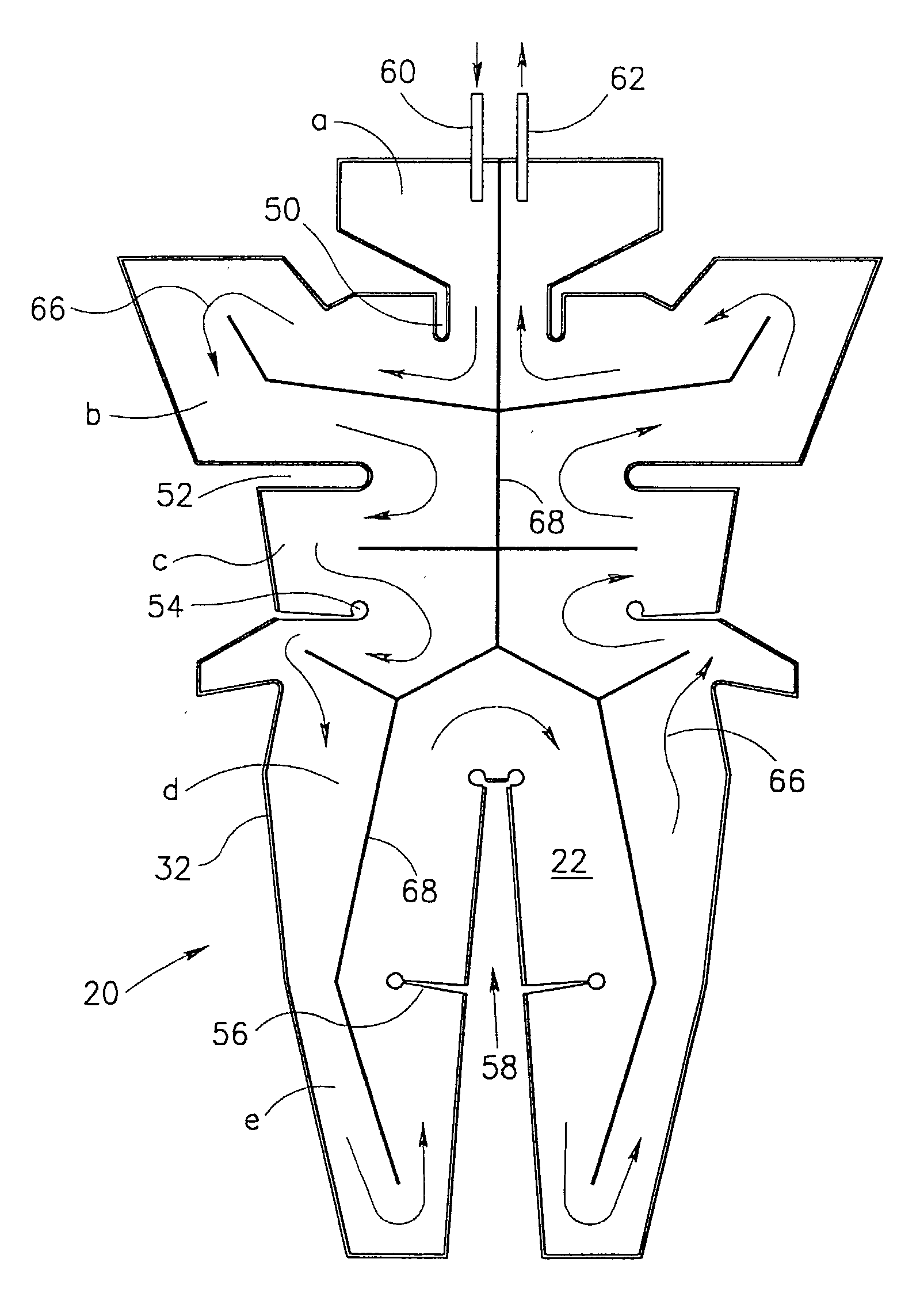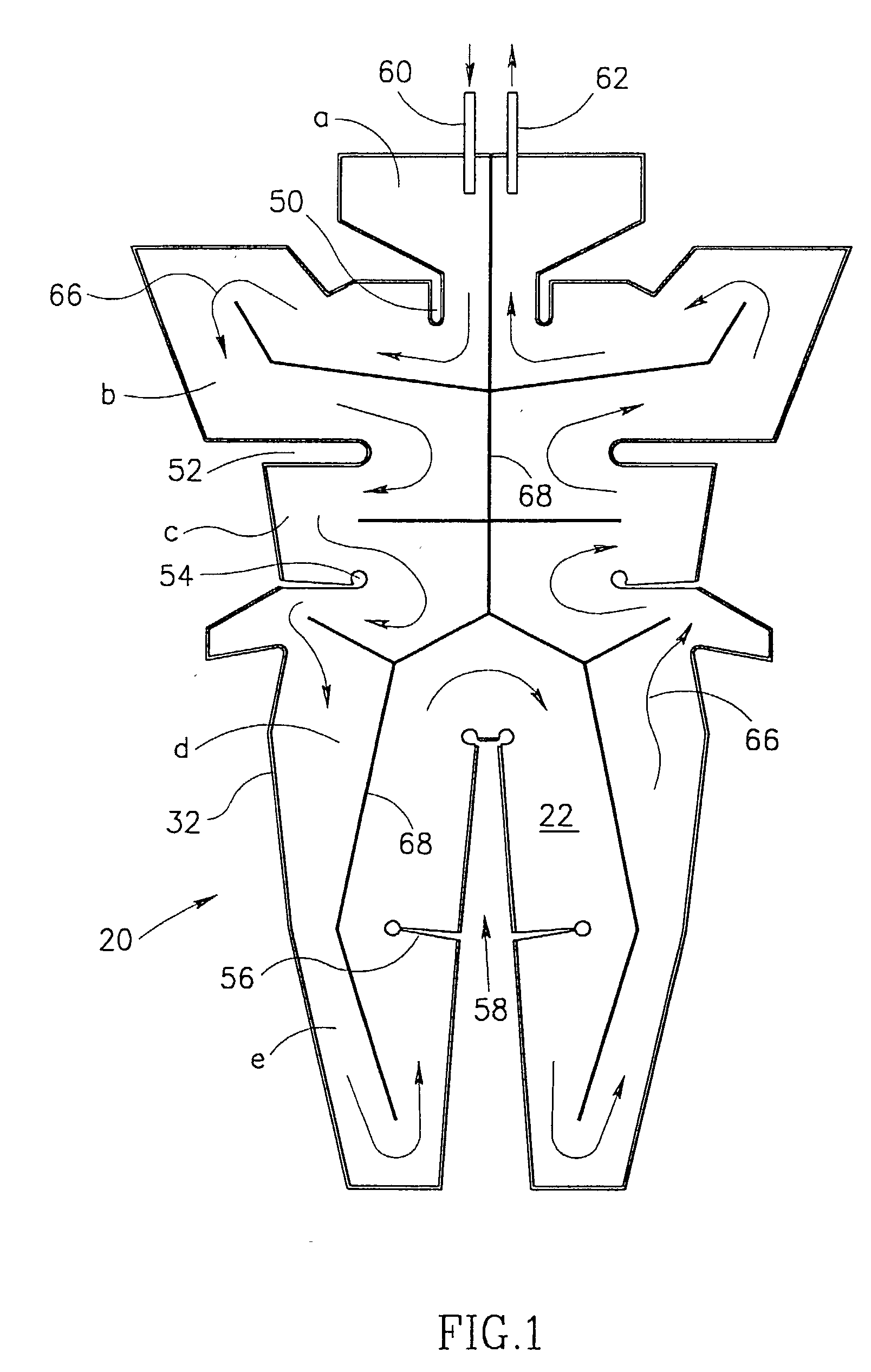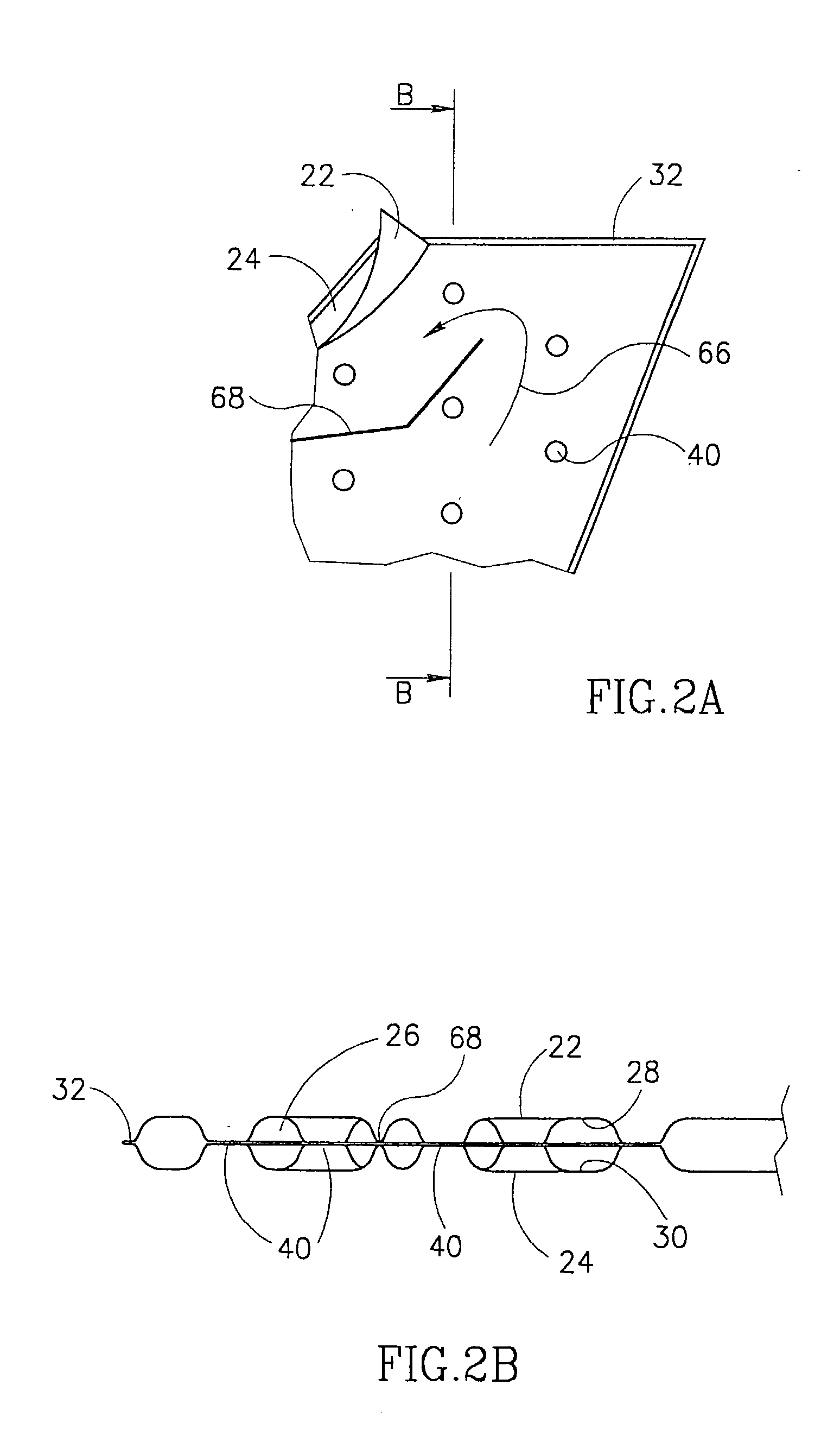Heat exchanger garment
a technology of heat exchanger and garment, which is applied in the field of heat exchanger garment, can solve the problems of excessive heat loss, increased risk of infection, and increased risk of infection, and achieve the effects of improving patient comfort, low cost, and being soft to touch
- Summary
- Abstract
- Description
- Claims
- Application Information
AI Technical Summary
Benefits of technology
Problems solved by technology
Method used
Image
Examples
Embodiment Construction
[0032] Reference is first being made to FIG. 1 showing a planar view of a garment generally designated 20 of which a part marked "II" in FIG. 1 is shown in a more enlarged view in FIG. 2A and of which a cross-section through lines B-B of FIG. 2A is shown in FIG. 2B. As can be seen in FIGS. 2A and 2B, the garment has an internal, body-facing layer 22 and an external layer 24 which define between them a fluid-tight space 26. Each of the layers 22, 24 is made from a thermoplastic material with a heat weldable, space-lining face 28, 30 (see FIG. 2B). The two layers are welded to one another in fluid tight manner at the edges 32.
[0033] The two layers 22, 24 are welded to one another at a plurality of weld points 40 seen in FIGS. 2A and 2B.
[0034] The weld points 40 cause a flow disturbance and consequently the flow of liquid through the garment (see description below) becomes uniform throughout the entire space of the flow path (see below).
[0035] The garment is symmetrical along a longitu...
PUM
 Login to View More
Login to View More Abstract
Description
Claims
Application Information
 Login to View More
Login to View More - R&D
- Intellectual Property
- Life Sciences
- Materials
- Tech Scout
- Unparalleled Data Quality
- Higher Quality Content
- 60% Fewer Hallucinations
Browse by: Latest US Patents, China's latest patents, Technical Efficacy Thesaurus, Application Domain, Technology Topic, Popular Technical Reports.
© 2025 PatSnap. All rights reserved.Legal|Privacy policy|Modern Slavery Act Transparency Statement|Sitemap|About US| Contact US: help@patsnap.com



